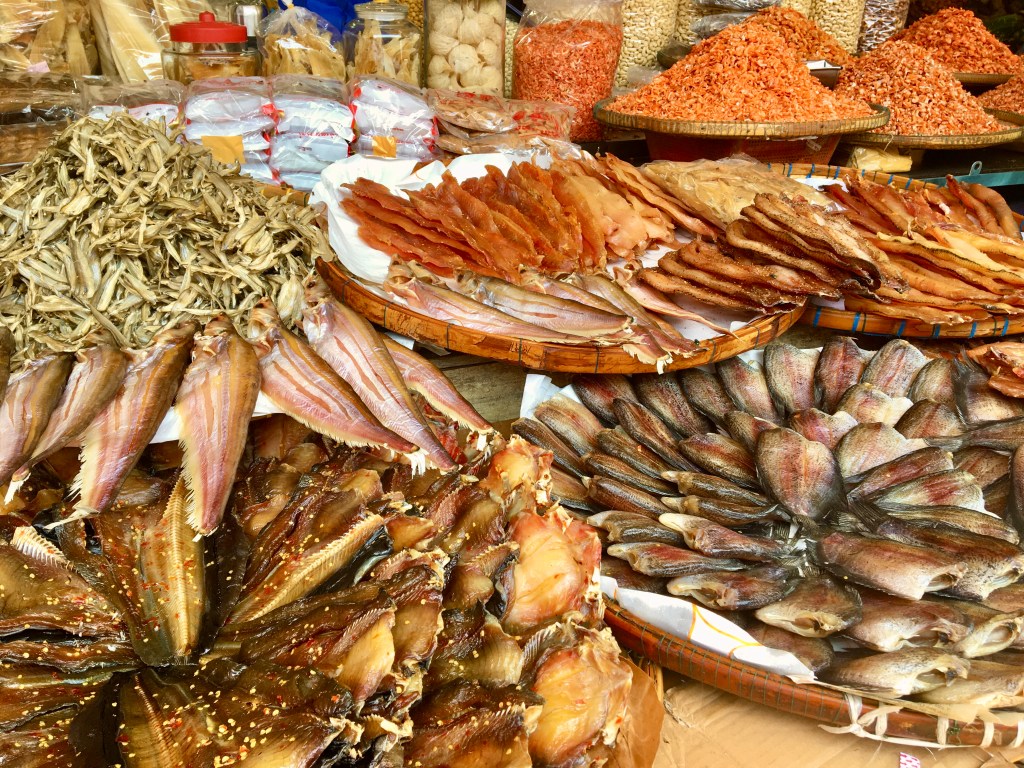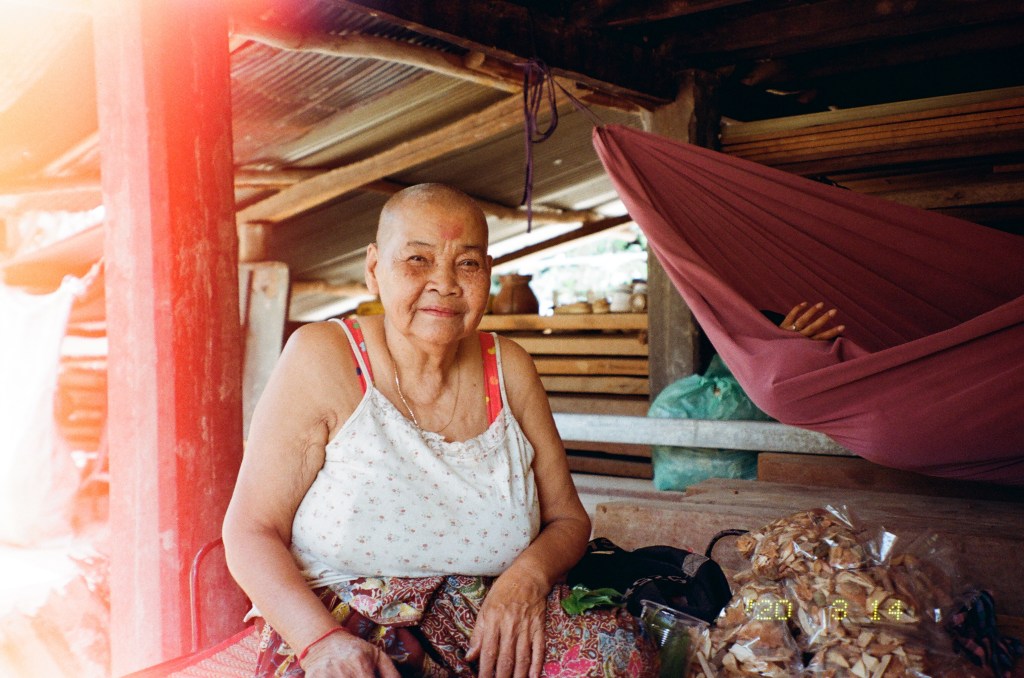Editor’s Note: We recently published the winners of our first annual SAFN photo contest. There are, of course, interesting stories and research projects tied to the photos, which we are hoping to share with you in coming weeks. Here is our first installment, from Ashley Thuthao Keng Dam.
Ashley Thuthao Keng Dam, Università degli Studi di Scienze Gastronomiche
As I shuffled my papers and double-checked my presentation slides in October 2018, I knew I was taking a risk. People do research for lots of different reasons under the hope of contributing something to the greater body of knowledge that is academia, but there I was, feeling guilty, because I had other plans. Although I was accepted into the PhD program in Eco-gastronomy, Education, and Society at the University of Gastronomic Sciences (Pollenzo, Italy) for my research project focusing on traditional maternal diets in The Gambia, I decided to pivot my research interests towards Cambodia.
In a romantic way, PhDs are glimpses into the areas and topics that we, as researchers, care about and are captivated by the most. While I thoroughly enjoyed my past fieldwork and research in The Gambia, I had this looming feeling that I wanted to research and focus on somewhere and something else. I couldn’t escape this idea that it wasn’t my story to tell, especially through research. I decided to call my mom, as some people do when emotional distress is high. I told her my grievances as well as what I was interested in researching and learning about. “I’m just not sure I’ll be able to find another place I felt as connected to as I did when I was working in The Gambia,” I explained, to which she replied “We actually do the same in Srok Khmai (Cambodia)!”
After a year and some months of scholarly reading and logistical planning, I made my way to Cambodia to begin my fieldwork research as a PhD Dissertation Senior Research Fellow for the Center for Khmer Studies. My PhD research at the time focused on documenting the ways that the human ecological instabilities incited by seasonality may shape the use and consumption of Traditional Khmer Medicine (TKM) during maternity by rural populations living in Siem Reap Province. I was curious about how the transitions between the rainy season to dry season, and vice versa, transform the (im)material conditions of those living in Siem Reap and how they may influence how these populations are addressing their health issues with plant-based TKM food-medicine remedies. I wanted to see which plants people were using, when they were using them, and for what reasons during maternity. I also wanted to know whether or not these plants are incorporated into multi-ingredient dishes, and if so, how are they are used as food-medicines.
Through my research, I endeavored to build bridges between medical anthropology, food and nutritional anthropology, ethnobotany, and food studies. I wanted to examine the intersections of how human ecological conditions potentially reorganize priorities and practices relating to food-medicines for rural populations. What makes Siem Reap Province an especially intriguing place to study these topics is its multiple levels and forms of ecological instability which include but are not limited to: seasonal flooding, work migration, and tourism patterns.
My fieldwork was initially divided into 2 sessions which were planned from February to May 2020 and September to December 2020. During each of these fieldwork sessions, I would be conducting semi-structured interviews, arranging focus groups, collecting botanical voucher specimens for the National Herbarium of Cambodia, documenting food-medicine recipes, and cooking said food-medicine dishes with study participants. Due to the unforeseen impacts of the COVID-19 pandemic, I was only able to spend 1 month in the field actively researching during the 5 months I was situated in Cambodia from February 2020 to July 2020. I had to cancel the focus groups, plant collection sessions, and cooking events in my study because of safety concerns. At present, I am unable to return for further research fieldwork because of COVID-19 travel restrictions.
However, in spite of these challenges, I was able to experience and deeply examine a whole new form of human ecological instability and its influences on TKM food-medicine use— the COVID-19 pandemic itself. At present, my study focuses on the three case-studies of seasonality, maternity, and COVID-19 as different forms of human ecological instability which have the potential to shape TKM food-medicine use and consumption. These case-studies were chosen to highlight the multidimensional nature of human ecological landscapes, from smaller individual forms, to larger ones. In the trio of case studies I’ve chosen, maternity demonstrates a smaller lens to observe both biophysical and sociocultural human ecological changes, while seasonality and the COVID-19 pandemic embody larger spanning examples of how biophysical and sociocultural human ecologies interact.
During my time in the field I visited a total of 10 villages across 4 communes in Siem Reap Province, Cambodia. Along with my research collaborators Chansophea Hang and Sarom Reth, I spoke to roughly 40 people through individual and group semi-structured interviews and a handful of others in passing conversation. I took dozens of film and digital photographs around Siem Reap as part of my visual ethnographic methods, mostly portraits of the people I spoke to, marketplaces, and casual scenes from around the villages. We were only able to collect a few plant samples because of the dry season timing and safety concerns of foraging groups; previously collected plant specimens have since been sent to the National Herbarium of Cambodia at the Royal University of Phnom Penh. We tasted many TKM plants in decoctions of water and rice wine, munched on TKM plants as fresh garnishes to our meals, visited the homesteads of a few TKM healers and TKM plant sellers, as well as had our souls recalled to our bodies. With red threads wrapped around our wrists and our names given to one of the TKM healers we interviewed, she sang to each of us personalized incantations — with faith that these magical words would lure our lingering souls home to our bodies where they belonged.
Within our study, we have identified over 123 plant species thus far using their scientific names and local Khmer names (if the scientific name could not be identified) used as or as part of a TKM maternity remedy, as well as 10 different plant species considered to be taboo or forbidden within maternal diets. We have identified over a dozen food-medicine dishes which are considered, under the TKM framework, to be beneficial to mother and or the fetus during maternity. This includes a few recipes for a variety of TKM maternity wines made with local fruits and plants within a rice wine decoction, as well as remedies perceived as prophylaxis for the COVID-19 virus.

Overall, despite not manifesting in the forms that I was expecting, these experiences have been a homage to the extraordinary randomness that arises during anthropological fieldwork. I’ve found that conceptualizing food and medicine in a TKM context, as well as attempting to chart its role and trajectory in contemporary Cambodian life, has revealed the enduring nature of the TKM system. In spite of its reported low rates of use, it appears that TKM is very present within the lives of Cambodians regardless of whether or not they use it their sole means of healthcare and treatment. In fact, it appears that TKM holds a synergistic niche in both Cambodian healthcare and cuisine which fluctuates and moves in relation to those who use it.

These findings caused me to think about my mother often while in Cambodia. I thought about how she’d make her own decoctions from various herbs, ginger, artichokes, and lemons whenever we were sick and how she’d feed us borbor (rice porridge) with trey ngeat (dried fish) when we couldn’t stomach anything. What I uncovered in Cambodia were not isolated relationships of food as medicine or medicine as food— but rather the roots and inspiration of my own healing experiences growing up as a member for the Khmer diaspora.

My wife is master nutritionist whose knowledge must be documented as the younger generation has no interest in TKM as many Khmer most unfortunately gravitate to strictly for profit clinics which are down right atrocious with their healthcare practices.
My wife owns Bar Ang in Battambang. Look it up.
God bless